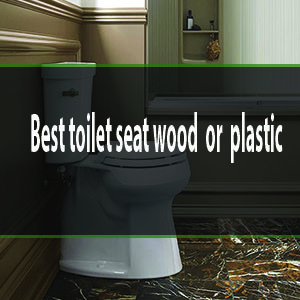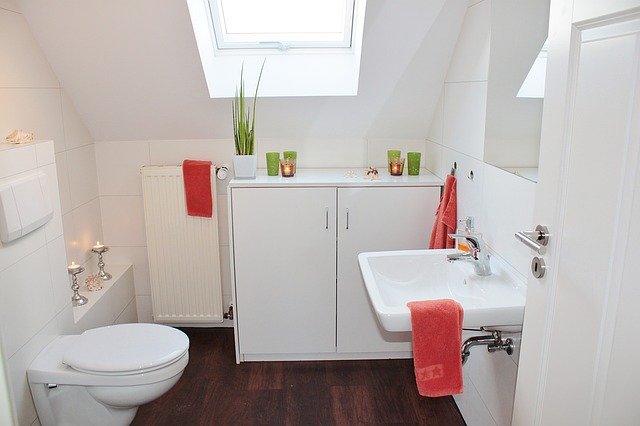You’ve just noticed that your toilet won’t stop running, and there’s no ball float in sight. The sound of constant water flow is more than just annoying—it’s a signal that something’s amiss, and it could be costing you money on your water bill.
But don’t worry; you’re not alone, and you’re certainly not powerless. Fixing a running toilet without a ball float is simpler than you might think, and with a little guidance, you can tackle this household nuisance on your own. By the end of this article, you’ll have the know-how to silence that incessant water flow and put your plumbing worries to rest.
Let’s dive into the practical steps you can take right now to fix the problem and regain your peace of mind.

Credit: www.wikihow.com
Table of Contents
Common Causes Of Running Toilets
The flapper is a small rubber piece. It controls water flow from the tank to the bowl. A worn-out flapper may not seal well. Water will leak into the toilet bowl. This can cause constant running. Replace a damaged flapper to stop the leak. It’s a simple fix that works.
The fill valve controls water flow into the tank. If it is not working right, the toilet may run. Adjust the valve to fix this. Sometimes, cleaning it helps. Replacing the fill valve also solves the problem. Always check this part when fixing a running toilet.
The overflow tube keeps water levels safe. If it is too high, water spills over. This makes the toilet run. Lower the tube to correct the level. Make sure it sits below the fill valve. This simple change can stop the running issue.

Credit: www.youtube.com
Essential Tools And Materials
A running toilet needs quick fixing. Basic tools can help. A screwdriver is essential. Use it to remove screws. Get a wrench too. It helps to tighten nuts. A bucket is useful. It catches water spills. Don’t forget pliers. They grip small parts. Also, a towel is handy. It dries wet spots. These tools make the job easy.
Some parts may need replacing. Get a flapper. It stops water flow. A fill valve is useful. It controls water level. Also, have a flush lever. It triggers the flush. Seals and washers can wear out. They need replacing often. Buy a new float. It keeps water level right. These parts help fix the toilet.
Shutting Off Water Supply
First, find the shut-off valve. It is often near the toilet base. Look on the wall or floor. Turn the valve to the right. This will stop the water flow. Make sure it is tight. Now, the toilet is ready for fixing.
Press the flush handle to drain water. Hold the handle down until the tank is empty. Check if the tank is completely drained. If water stays, remove it with a sponge. This step helps in seeing the parts clearly. Now, the toilet is ready for repair.
:strip_icc()/bhg-how-to-fix-running-toilet-step-01-0277_5f8bw6BKKuw8OrSfLkvaf_-aecdb781e7b245d8b06fa11bf491fdc8.jpg)
Credit: www.bhg.com
Inspecting The Fill Valve
Inspecting the fill valve can solve toilet running issues without a ball float. Check for debris or worn parts that may affect water flow. Adjust the valve for proper water level and ensure smooth operation.
Checking For Damage
Look at the fill valve closely. See if it has cracks. These cracks might cause leaks. Feel the valve with your hand. See if it feels loose or tight. A loose valve can cause problems. If the valve is broken, it needs to be replaced. Replace the valve with a new one. This will help stop the toilet from running.
Adjusting The Fill Valve Height
The fill valve height affects water flow. It should be set correctly. Make sure the valve is not too high. It should sit below the tank’s lid. To adjust, turn the screw on the valve. Turning it will raise or lower the valve. Check if the water level is correct. The water should stop at the marked line. Adjust until the water level is right. This will help fix the running toilet.
Repairing Or Replacing The Flapper
Fixing a running toilet can often involve repairing or replacing the flapper. This essential part seals the tank, preventing water from continuously flowing into the bowl. A quick check and easy swap can solve the issue effectively.
Identifying Flapper Wear
The flapper can wear out over time. Check for cracks or warping. If it’s old, it might not seal well. Water might leak from the tank. Look for water stains or a running sound. These are signs of a worn flapper. Replace if needed.
Installing A New Flapper
Turn off the water supply. Flush the toilet to empty the tank. Remove the old flapper. Attach the new flapper to the hooks. Make sure it fits snugly. Connect the chain to the handle arm. Adjust the chain length if needed. Turn on the water and check for leaks.
Adjusting The Overflow Tube
The overflow tube should not be too high or low. It must be at the right height. Water level should be below the top of the tube. Use a ruler to check the height. It is easy to adjust. Twist the tube gently. Move it up or down. Make sure it is stable. Test the flush. Check if the water stays inside the tank.
The tube must be tight and secure. Loose tubes cause leaks. Use a wrench to tighten it. Hold the tube steady. Turn the nut clockwise. Be careful not to crack the tube. Check the connections. Ensure there are no gaps. A secure tube stops water waste. Your toilet will work better. It saves water and money.
Testing The Toilet
Restoring water supply is the first step. Turn the water valve back on. Wait for the tank to fill up. Listen carefully for any strange sounds. Check the water level in the tank. Make sure it reaches the marked line. The toilet should flush normally now.
Next, it’s time to check for continued leaks. Look around the base of the toilet. Make sure there is no water pooling. Flush the toilet again. Listen and watch closely. If water drips or leaks, something is still wrong. You may need to tighten some parts. Or, adjust the chain in the tank.
Preventive Maintenance Tips
Check your toilet parts often. Look for leaks or wear and tear. Make sure the water level is not too high. Adjust it if needed. This can stop bigger problems. A quick check can save time later. Also, listen for strange sounds. These can be early signs of trouble. Keep your toilet area clean. It helps in spotting issues early.
Replace old parts before they break. Flappers and fill valves wear out fast. New parts work better and save water. Follow instructions when replacing parts. This makes sure everything fits right. Keep extra parts at home. It’s good to be ready. A small fix now can save big repairs later. Regular maintenance keeps your toilet running well.
Frequently Asked Questions
How Do I Fix A Running Toilet?
First, turn off the water supply. Remove the tank lid and inspect the parts. Check the flapper and replace if worn out. Adjust the fill valve to maintain the correct water level. Ensure all components are secure. Test the toilet by flushing to see if the issue persists.
Why Is My Toilet Running Continuously?
A continuously running toilet often results from a faulty flapper. It might not be sealing properly, causing water to leak. The fill valve could be improperly adjusted, affecting the water level. These issues can lead to increased water usage and higher bills.
Inspect these components to identify the problem.
Can A Running Toilet Increase My Water Bill?
Yes, a running toilet can significantly increase your water bill. It constantly drains water, leading to wastage. This can result in hundreds of gallons being wasted daily. Timely repairs are crucial to prevent unnecessary expenses. Fixing the issue ensures efficient water use and reduces costs.
Is A Plumber Necessary For Fixing A Toilet?
Not necessarily, many running toilet issues can be fixed by homeowners. Simple adjustments like replacing the flapper or adjusting the fill valve are manageable. However, if the issue persists or you’re unsure, consult a professional. They can provide expert assistance and ensure proper repairs.
Conclusion
Fixing a running toilet is simple with the right steps. You save water. You save money. Avoid stress with this easy fix. No ball float needed. Check flapper and fill valve. Replace worn parts. Tighten loose connections. These steps help stop leaks.
Your toilet runs smoothly again. Keep tools handy for future fixes. Remember, regular checks prevent big problems. A little effort goes a long way. Enjoy a quiet, efficient bathroom. You got this!






